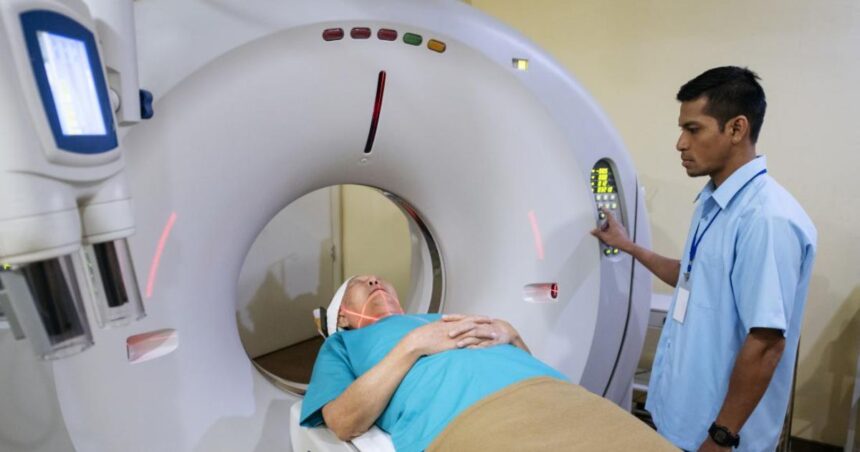Medical imaging, MRI (Magnetic Resonance Imaging) stands out for its unique advantages over other techniques like X-rays and CT scans. We will explore 5 benefits of MRI that make it a preferred choice for doctors and patients alike.
From its superior ability to visualize soft tissues to its safety profile, MRI offers several important features that enhance diagnostic accuracy and patient comfort.
1. Superior Soft Tissue Contrast
MRI stands out for its ability to provide highly detailed images of soft tissues, organs, and structures that other imaging techniques like X-rays or CT scans can’t capture. MRI uses powerful magnets and radio waves to create images, resulting in a much higher contrast between different types of soft tissues.
This level of detail allows doctors to see ligaments, tendons, nerves, and other soft tissues much more clearly than with other imaging methods. For example, if you have a torn ligament or a pinched nerve, an MRI can show the exact location and extent of the injury. This precision helps doctors diagnose conditions accurately and plan the best treatment.
2. Non-invasive Procedure
One of the best things about MRI is that it’s completely non-invasive. No injections, incisions, or internal probes are involved, making it a much more comfortable experience for patients. It means there’s less risk and discomfort compared to other diagnostic procedures. MRI simply requires lying still in a scanner while images are taken, which makes it a preferred choice for many patients and doctors. Its non-invasive nature eliminates potential complications and recovery time, offering a safe and patient-friendly option.
3. No Radiation Exposure
Unlike X-rays and CT scans, MRI does not use ionizing radiation. This makes it a safer option, particularly for pregnant women, children, and patients who need repeated imaging. Avoiding radiation reduces the long-term risks associated with exposure, making MRI a safe and effective diagnostic tool.
4. Multi-planar Imaging
MRI can take cross-sectional images from multiple angles, creating detailed 3D pictures of the body. This multi-planar capability allows doctors to examine complex anatomical structures thoroughly. The ability to view the body from different angles helps get a complete and accurate diagnosis.
5. Wide-ranging Imaging Capabilities
X-rays usually focus on specific regions; MRIs can scan large body areas in one go. This means doctors can comprehensively examine symptoms affecting multiple body parts with a single MRI scan. This wide-ranging capability makes MRI an excellent tool for evaluating complex conditions that impact different body areas.
Limitations of MRI
MRI is a powerful diagnostic tool, but it does have some limitations. One of the main drawbacks is the cost, as MRI scans tend to be more expensive than other imaging techniques like X-rays or CT scans. Also, MRI is unsuitable for patients with certain types of metal implants, such as pacemakers or cochlear implants, because the magnetic field can interfere with these devices.
The procedure can also be uncomfortable for claustrophobic patients, as it requires lying still inside a narrow tube for an extended period. MRI scans take longer to perform than X-rays or CT scans, which can be a challenge in emergencies where quick results are needed.
Finally, while MRI is excellent for imaging soft tissues, it may not be as effective for detecting certain types of bone injuries or lung conditions.
Final Thoughts
MRI provides various benefits, making it a valuable diagnostic tool in modern medicine. Its superior soft tissue contrast, non-invasive nature, lack of radiation exposure, multi-planar imaging capabilities, and wide-ranging scanning ability offer significant advantages.
While each imaging technique has specific uses, MRI’s unique features make it particularly effective for diagnosing complex conditions. Always consult your healthcare provider to determine the best imaging method.

